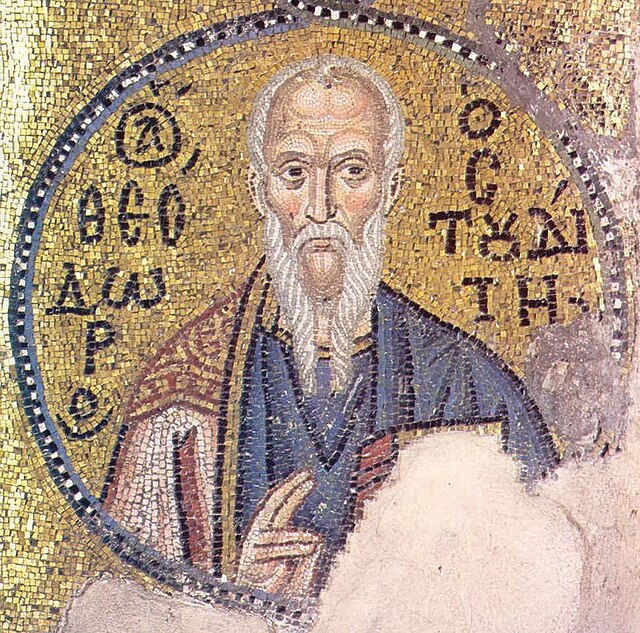Theodore the Studite, also known as Theodorus Studita and Saint Theodore of Stoudios/Studium, was a Byzantine Greek monk and abbot of the Stoudios Monastery in Constantinople. He played a major role in the revivals both of Byzantine monasticism and of classical literary genres in Byzantium. He is known as a zealous opponent of iconoclasm, one of several conflicts that set him at odds with both emperor and patriarch. Throughout his life he maintained letter correspondences with many important political and cultural figures of the Byzantine empire; this included many women, such as the composer and nun Kassia, who was much influenced by his teachings.
Saint Theodore of Studion: 11th-century mosaic from Nea Moni Monastery, Chios
The Stoudios Monastery as depicted in an 11th-century manuscript.
Mosaic of Theodore the Studite located in Hosios Loukas.
The Monastery of Stoudios, more fully Monastery of Saint John the Forerunner "at Stoudios", often shortened to Stoudios, Studion or Stoudion, was a Greek Orthodox monastery in Constantinople, the capital of the Byzantine Empire. The residents of the monastery were referred to as Stoudites. Although the monastery has been derelict for half a millennium, the laws and customs of the Stoudion were taken as models by the monks of Mount Athos and of many other monasteries of the Orthodox world; even today they have influence.
Byzantine miniature depicting the Stoudios Monastery and the Propontis (Sea of Marmara), from the Menologion of Basil II (c. 1000).
Image of St. Theodore the Studite (11th-century mosaic from Nea Moni monastery on Chios).
The interior of the St. John Stoudios (Imrahor) Monastery in February 2017
Street view of the monastery





